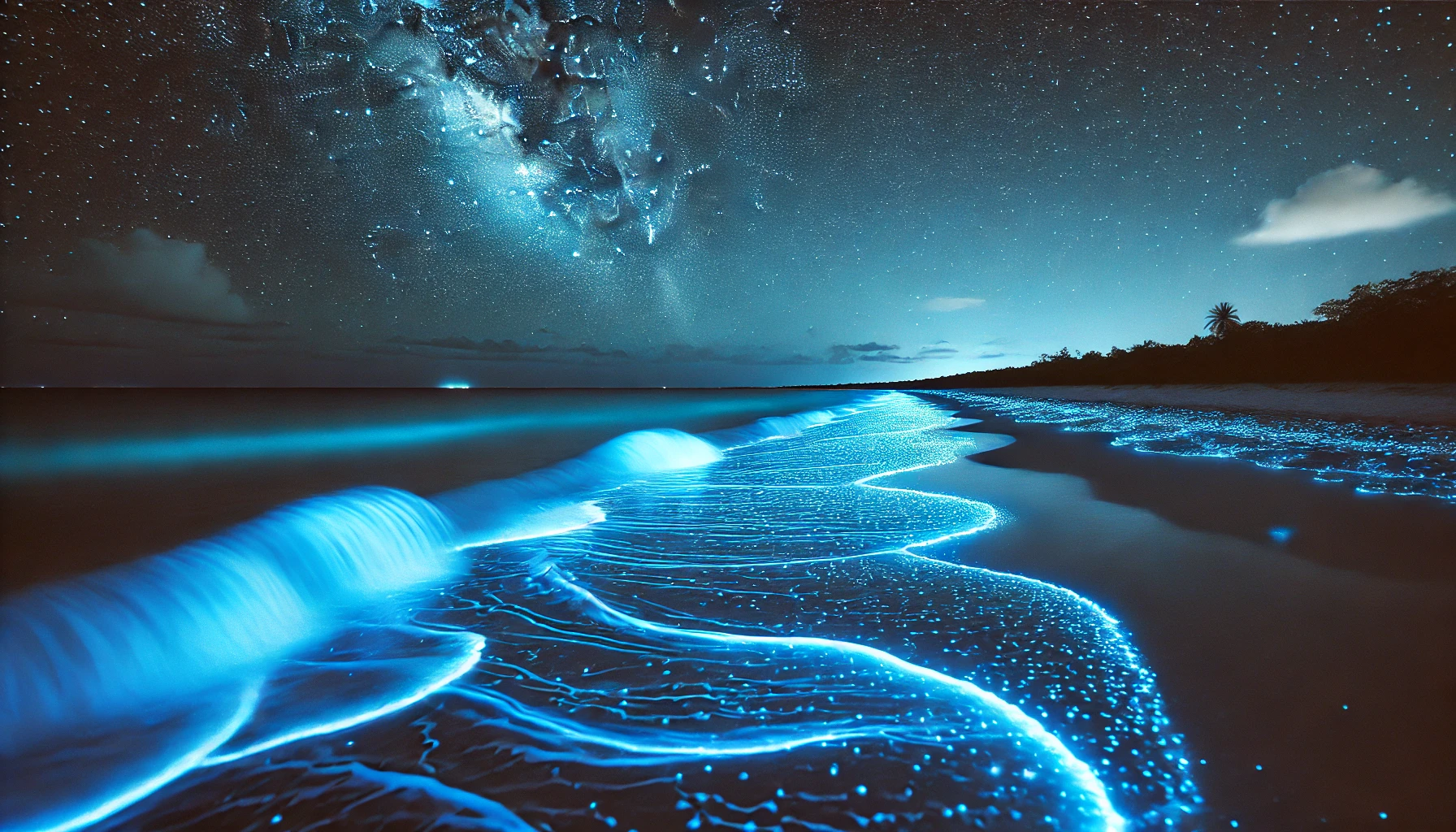Imagine walking along a beach at night, and with each step, the water glows a soft, radiant blue. This enchanting sight, known as bioluminescence, is caused by tiny organisms in the ocean emitting light, transforming the shoreline into a magical, glowing display. Here’s a look at how and why these incredible bioluminescent beaches exist, along with where you can witness them. Truly, bioluminescent beaches show how and why oceans glow at night.
What Causes Bioluminescence?
Bioluminescence in the ocean is primarily produced by microscopic organisms called dinoflagellates and, in some regions, by certain types of jellyfish, squid, or fish. These organisms contain a unique chemical called luciferin, which reacts with oxygen to produce light, similar to the process that occurs in fireflies.
Bioluminescence serves multiple purposes for marine organisms:
- Defense Mechanism: Some organisms use bioluminescence to startle or deter predators.
- Communication: In certain species, bioluminescence helps in attracting mates or communicating within a group.
- Camouflage: Some animals produce light to blend in with the faint light coming from the surface, making them harder to spot from below.
How and Why Oceans Glow at Night
- Chemical Reaction
The glow of bioluminescent beaches results from a chemical reaction inside these microorganisms. When disturbed by waves, boat wakes, or even a simple touch, they emit light. This reaction is essentially the result of a mix between luciferin and oxygen, catalyzed by an enzyme called luciferase, producing a soft, cool light. This is a clear example of how and why oceans glow at night. - Environmental Triggers
Certain environmental conditions can trigger higher concentrations of bioluminescent organisms. Factors like warmer water temperatures, nutrient availability, and calm water conditions contribute to large blooms of dinoflagellates, resulting in brighter and more frequent bioluminescent displays, influencing how and why oceans glow at night.
Best Locations to See Bioluminescent Beaches
Some of the world’s most famous bioluminescent beaches include: Bioluminescent Beaches: How and Why Oceans Glow at Night can be best observed from these iconic locations.
- Mosquito Bay, Puerto Rico – Known as one of the brightest bioluminescent bays due to its dense concentration of dinoflagellates.
- Vaadhoo Island, Maldives – The Maldives is famous for its glowing beaches, where bioluminescent plankton lights up the shores.
- Manasquan Beach, New Jersey, USA – During certain times of the year, the waves along this beach glow due to an abundance of bioluminescent organisms.
When to See Bioluminescent Beaches
Bioluminescent displays are best observed in darker, moonless conditions as light pollution can dilute the glow. Summer months and warmer water temperatures often bring higher concentrations of bioluminescent organisms, making the glow brighter and more vibrant. These conditions emphasize how and why oceans glow at night.
Conclusion
Bioluminescent beaches are one of nature’s most magical spectacles. From scientific processes to breathtaking beauty, these glowing beaches offer a captivating experience for anyone lucky enough to witness them. Whether you’re visiting a bioluminescent bay or catching a glimpse of glowing waves, it’s an unforgettable reminder of the beauty and mystery beneath Bioluminescent Beaches: How and Why Oceans Glow at Night.


1 thought on “Bioluminescent Beaches: How and Why Oceans Glow at Night”